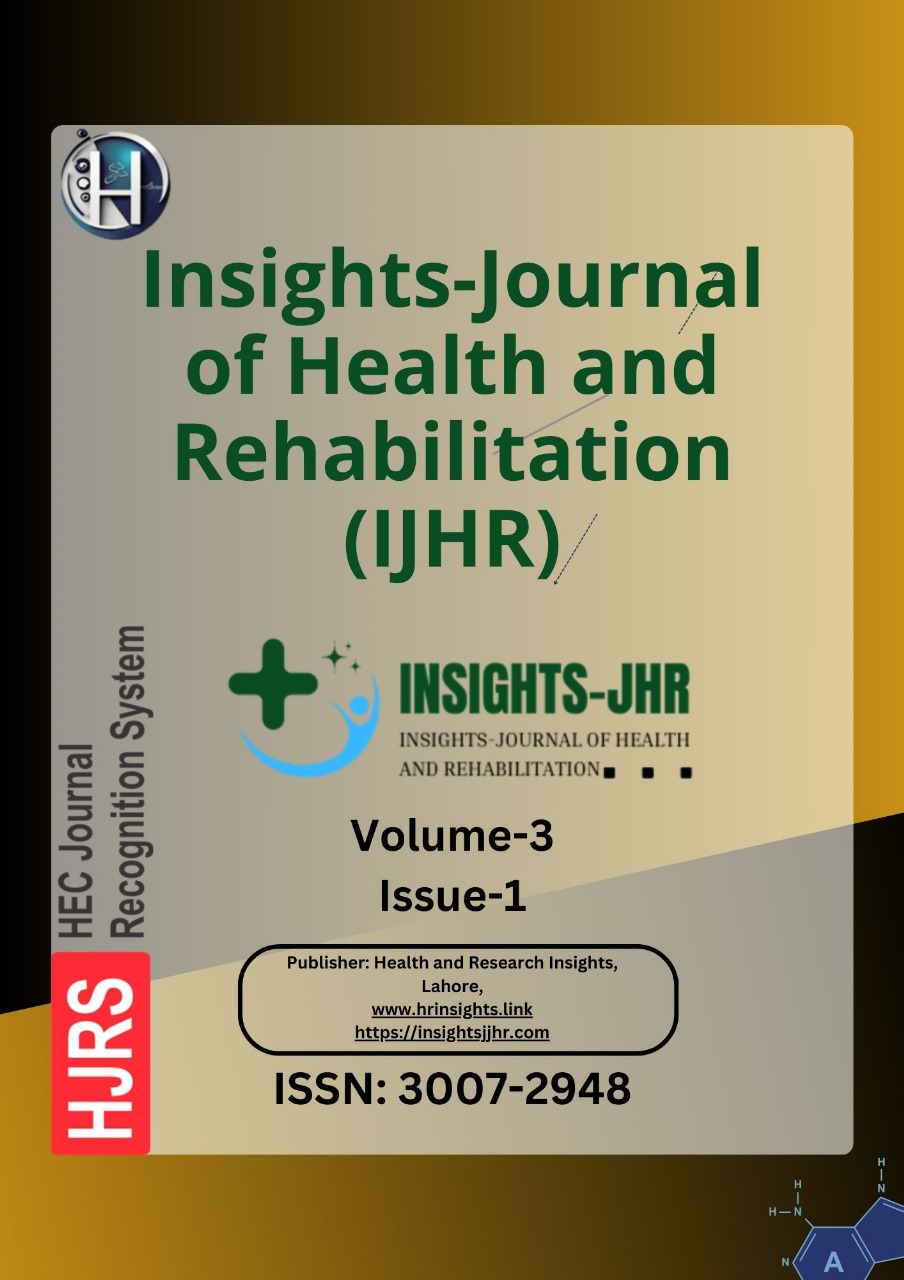TYPE 2 DIABETES IN PESHAWAR: A SURVEY OF PREVALENCE AND KEY RISK FACTORS
DOI:
https://doi.org/10.71000/p5m87s50Keywords:
Comorbidities, Dietary Habits, Lifestyle Modifications, Metabolic Disorders, Physical Endurance, Type 2 Diabetes Mellitus (T2DM), Risk FactorsAbstract
Background: Type 2 diabetes mellitus (T2DM) is a prevalent metabolic disorder characterized by insulin resistance and chronic hyperglycemia, leading to severe complications if not effectively managed. Its incidence is rapidly increasing, particularly in developing countries, due to genetic predisposition, sedentary lifestyles, and poor dietary habits. The disease is often accompanied by multiple comorbidities, impacting patients' overall health and quality of life. Identifying demographic patterns, lifestyle behaviors, and associated risk factors is crucial for developing targeted interventions to reduce the burden of T2DM.
Objective: This study aimed to assess the demographic distribution, lifestyle habits, dietary patterns, comorbidities, and physical health challenges among T2DM patients in Peshawar to provide insights into disease prevalence and associated risk factors.
Methods: A cross-sectional study was conducted on 400 diagnosed T2DM patients visiting the Complex Medical Laboratory and Diagnostic Centre, Peshawar, between February 2024 and January 2025. A structured questionnaire was used to collect demographic information, medical history, dietary intake, and lifestyle factors through face-to-face interviews and medical record reviews. Physiotherapy assessments, including balance, mobility, and muscle strength tests, were performed. Smoking prevalence was categorized into daily smokers, occasional smokers, and non-smokers. Data were analyzed using SPSS (version 22), with descriptive statistics presented in percentages and frequencies.
Results: Among the 400 participants, 69.5% were female and 30.5% were male. The highest proportion of cases (36.5%) was observed in the 41–50 age group, followed by the 51–60 age group (31.5%). Insulin dependency was noted in 34% of patients, while 49.25% engaged in regular physical activity. A family history of diabetes was reported in 76.5% of cases, and 16.25% had been hospitalized due to severe hyperglycemia. Dietary analysis revealed that 100% consumed wet fruits, while 72% reported milk consumption, 74% cereals, and 69.5% dry fruits. However, 61.5% consumed fried food regularly, indicating poor dietary habits. Comorbidities were prevalent, with depression affecting 91% of patients, followed by delayed wound healing (88%), fatigue (86%), and symptoms such as excessive thirst, hunger, and frequent urination (76%). Hypertension and osteoarthritis were present in 72% of patients, and 69% had cardiac disease. Regarding smoking habits, 25% were daily smokers, 4% occasional smokers, and 71% non-smokers. Physical assessments indicated that 64% had decreased muscle strength, while 58% experienced reduced physical endurance.
Conclusion: The study highlights the high prevalence of T2DM among middle-aged individuals, particularly females, with a significant association between the disease and family history, dietary choices, and comorbid conditions. The findings underscore the need for targeted interventions, including lifestyle modifications, dietary management, mental health support, and rehabilitation programs to improve patient outcomes. Implementing structured awareness campaigns and patient-centered rehabilitation strategies can contribute to better disease management and reduced complications.
Downloads
Published
Issue
Section
License
Copyright (c) 2025 Tasleem Orakzai, Rafia Nazar, Hira Shakoor, Muhammad Zulfiqar Ali, Rabia Shafiq, Zarak Speen, Shumaila Khan, Muhammad Adnan, Muhammad Umair (Author)

This work is licensed under a Creative Commons Attribution-NonCommercial-NoDerivatives 4.0 International License.







